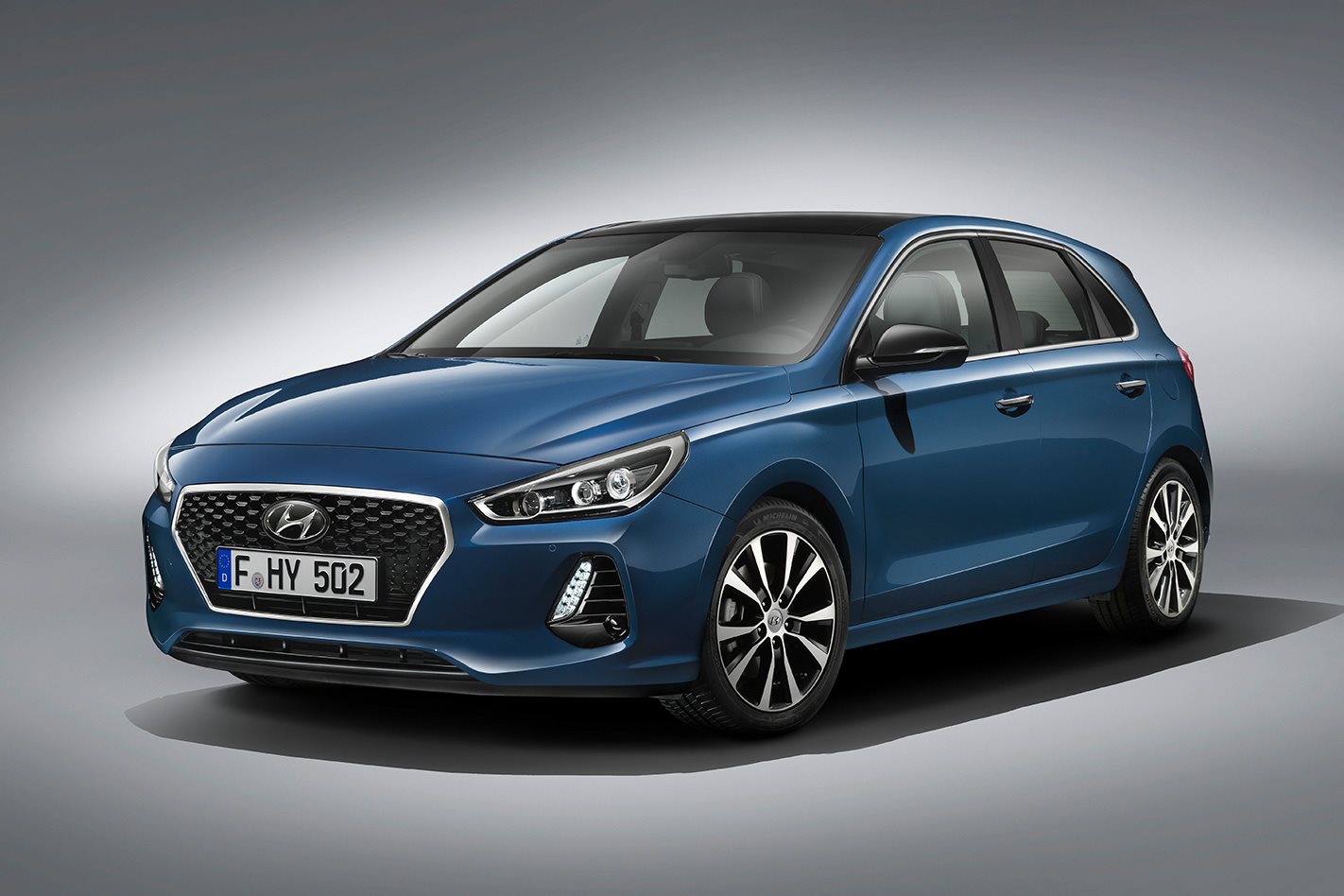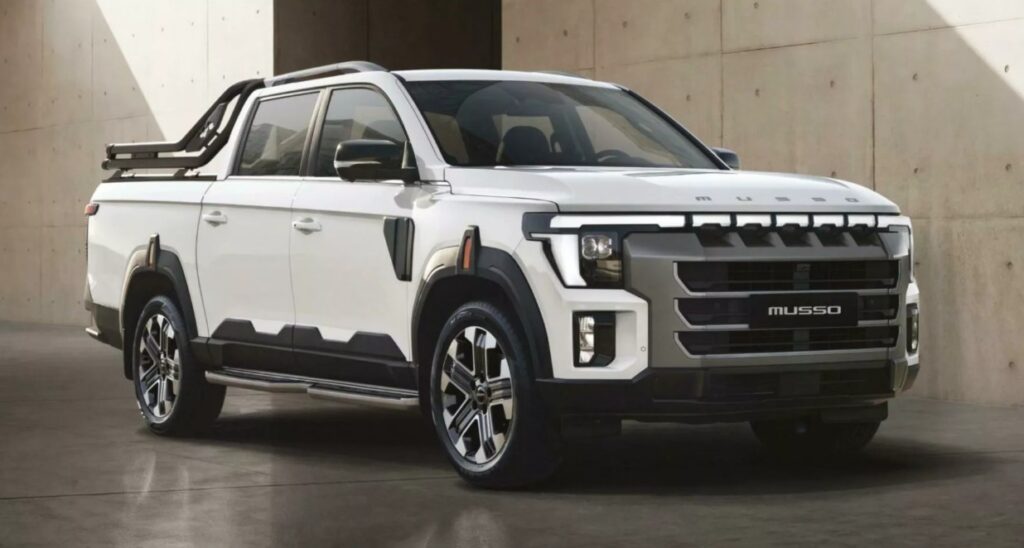Hyundai has lifted the lid on its third-generation Hyundai i30 today, peeling back the covers at an event in Frankfurt to reveal the newest incarnations of the Korean automaker’s volume-selling small hatch for the first time.
Why Frankfurt? Hyundai may hail from South Korea, but the company has gone to great lengths to impart an upmarket Euro aura to the latest i30, making it more premium and refined than past generations. It’s grown up, gone to finishing school and learned how to dress itself.
The design, development and testing for the new i30 all centred around Hyundai’s German R&D homeroom in Russelsheim. It’ll be built in the Czech Republic for Europe, though Australia-bound i30s will continue to be sourced from South Korea. Save for that, the new i30 would be a Korean car in name only.
A brace of new downsized turbo petrol and diesel engines – a three-cylinder petrol 1.0-litre and a 1.4 turbo petrol four-cyl among them – provide power, while a seven-speed dual-clutch automatic takes over from the old model’s hydraulic six-speed. At the same time, cabin quality and the i30’s infotainment fit-out gets a massive boost.
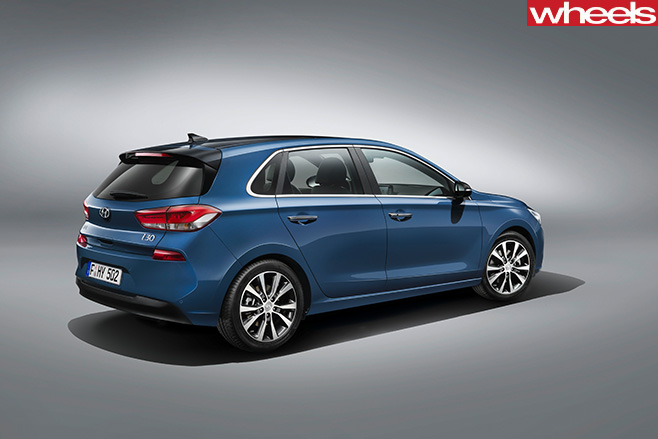
The 88kW Euro-market turbo triple 1.0-litre is not only low on power, but as a manual-only powertrain it’s been deemed unsuitable for the auto-loving Australian market.
The 102kW/242Nm 1.4-litre turbo petrol that will sell alongside the three-pot in Europe is an all-new engine and comes available with a dual-clutch automatic as well as a manual, but Hyundai Australia has opted for a mildly-improved version of the current i30 SR’s naturally-aspirated 2.0-litre as the new i30’s mainstay motor.
Instead of the 2.0, the 2017 Aus-market Hyundai i30 SR will be propelled by the 1.6 litre turbo petrol motor that also sees service in the Hyundai Tucson and Veloster SR Turbo. Outputs for both the 2.0-litre and 1.6-litre turbo i30s remains secret for now, but in the current-gen i30 SR the former makes 124kW of power and 201Nm of torque, while the latter produces up to 150kW/265Nm in the Veloster Turbo.
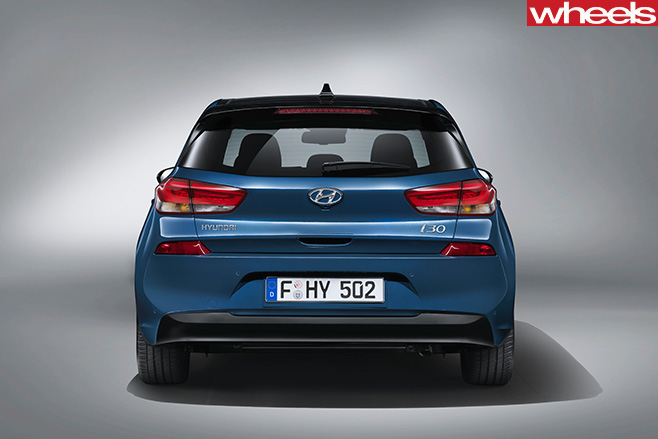
Automatics and manuals will be available across the range, but only the 1.6 turbo petrol and 1.6 turbo diesel will receive Hyundai’s latest dual-clutch automatic transmission. The 2.0 litre atmo petrol will soldier on with a six-speed hydraulic automatic.
Hyundai’s European engineers went to great lengths to impart a sportier feel to the new i30’s chassis, honing its tune on European roads and at the fearsome Nurburgring test track – where the Korean company maintains a permanent presence with a fully-fledged development centre.
The company claims the new i30 has steering that’s 10 percent more direct than before, and its chassis responds to inputs 15 milliseconds faster.
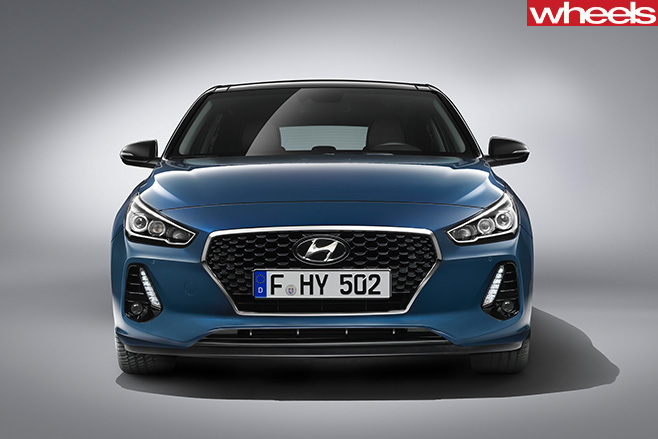
A multi-link suspension makes a return in the new i30, though entry-level i30 variants sold in Australia will stick with a simpler and cheaper torsion beam setup.
Other dynamic improvements come from reduced weight, with 53 percent of the new i30’s bare bodyshell being constructed of high-strength steel. The body-in-white sheds 28kg as a result, and the 1.4 litre turbo model (which should weigh roughly the same as the 1.6 turbo over here) tipping the scales at 1204kg – over 100kg less than the current i30 SR.
It also boasts 22 percent more torsional rigidity than the current model thanks to new construction methods.
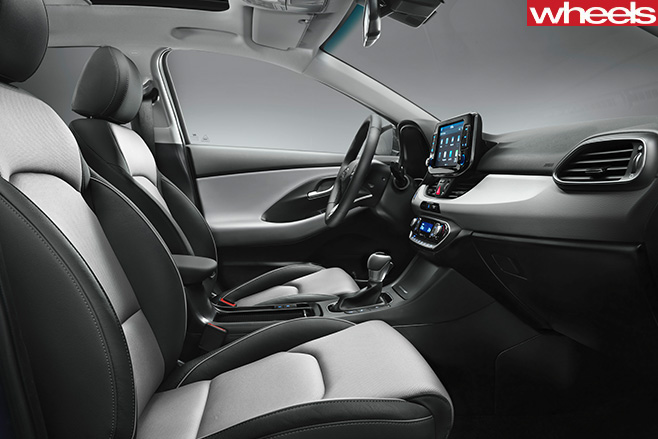
In the boot the 2017 i30 gets a cargo-carrying upgrade, with seats-up boot capacity rising 17 litres to 395 litres, increasing to 1301 litres with the split-fold seatbacks folded flat.
A dual-level boot floor provides extra stowage options, while a ski port allows extra storage flexibility.
The interior also ditches the current car’s Korean frumpiness for a an upscale design that places the infotainment screen up high, sprouting out of the dashboard like a tombstone in a fashion similar to the Mazda3 and most current-gen BMWs.
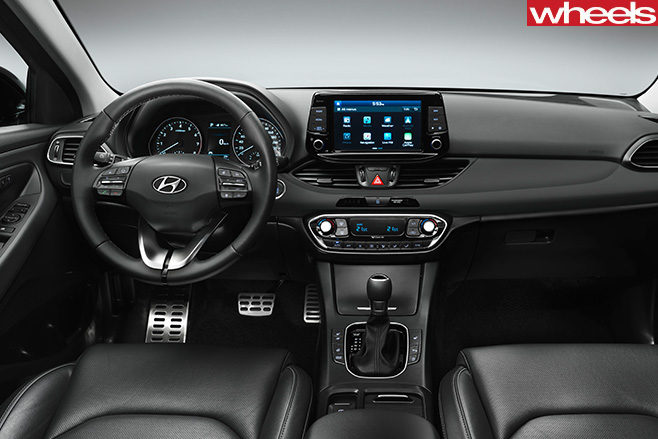
Lower-grade models receive a seven-inch touchscreen display, while premium variants score an eight-inch infotainment screen. Apple CarPlay and Android Auto smartphone mirroring will also be standard across the range, rather than just on the base model (as is the case with the current i30).
A wireless smartphone charging pad will also be built into some models – a new feature for the i30.
The list of available safety equipment is extensive. While precise specs have yet to be locked in for Australia, some variants of the 2017 i30 range will feature autonomous emergency braking, front collision warning, active cruise control, blind spot monitoring, rear cross traffic alert, lane keep assist, highbeam assist and fatigue monitor.
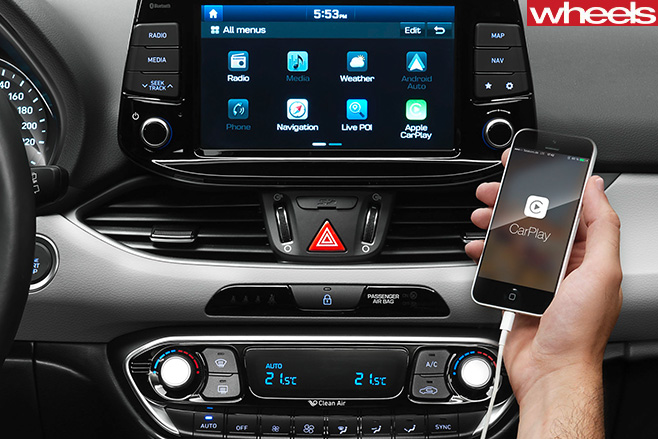
Other high-end features that are new to the i30 include a heated steering wheel and heated and cooled front seats. A two-position memory function will also be offered for the power-adjustable driver’s seat.
Australian-market pricing and specifications have yet to be confirmed, though expect that information to be released closer to its local release in the second quarter of 2017.
Other body styles will be added to the range, and the high-performance i30 N hot hatch will join the Hyundai family later in 2017.

